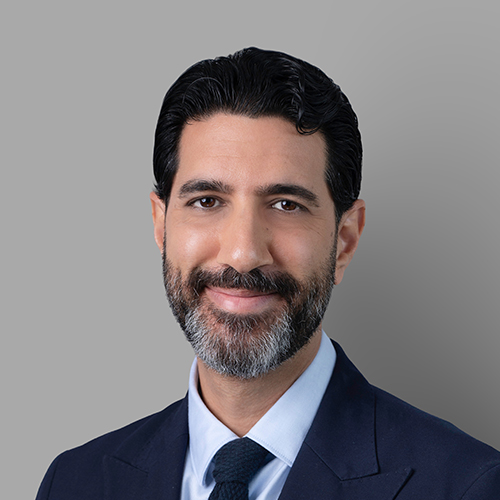The latest global occupier survey from Cushman & Wakefield tracks how real estate priorities are evolving in step with broader shifts in corporate structure, cost control, and workforce strategy.
In the UAE, where market fundamentals remain strong and supply is tight, the global findings warrant a more grounded interpretation - one that reflects a landlord-led market where quality, control, and long-term positioning still carry weight.
Globally, Cost Still Reigns. In the UAE, Scarcity Has the Loudest Voice.
Across regions and sectors, occupiers remain focused on cost containment. In the C&W What Occupiers Want 2025 survey, cost pressure ranked as the number one strategic driver of Commercial Real Estate (CRE) decisions globally.
But in the UAE, it is scarcity, rather than pricing, that is reshaping landlord-tenant dynamics. Prime office clusters such as DIFC, Dubai Internet City, and Business Bay are operating at near-full occupancy, and Grade A supply remains limited. The result is continued upward pressure on rents, longer lease terms, and increased pre-leasing in well-positioned new developments.
Citywide office occupancy in Dubai stood at 92% at the end of Q2 2025, with a projected increase to 94% by year-end. Grade A assets are closer to 96% occupancy, and year-on-year rental growth in 2024 reached 22%, led by strong demand and limited new Grade A supply.
In DIFC and Dubai Internet City, pre-leasing activity is accelerating, with several upcoming developments - such as DIFC Square and DIC’s Innovation Hub Phases 2 and 3 - securing tenants well before completion. In DIFC, DIFC Square is already around 40% committed under LOI, with approximately 90% of the building close to asking rates.
Metrics Are Evolving Globally. In the UAE, Finance Still Calls the Shots.
One of the more significant shifts highlighted in the global survey is the rising alignment between CRE and HR functions. Nearly a third of CRE teams now report into HR, suggesting a broader focus on workplace experience and employee outcomes.
In the UAE, however, regional CRE decision-making remains firmly anchored to financial performance. For most landlords and regional tenants, occupancy cost, space efficiency, and capital control still outweigh engagement or wellness KPIs. This is especially true for regional corporates and family office-backed firms, where cost discipline and asset control continue to shape strategy.
At Cushman & Wakefield Core, we’re seeing long-term tenants more likely to seek long-term leases to amortise capital expenditure and secure themselves against further rental increases in the open market, rather than pursue short-term flexibility. We have also witnessed tenants consider the option of buying their office space, although this remains limited to local and regional occupiers rather than MNCs.
Location Flexibility Is the Global Norm. But the UAE Remains Anchored.
Globally, 61% of occupiers have implemented more flexible hiring models, shifting toward location-agnostic strategies and remote-enabled roles. But in the UAE, this level of flexibility is constrained by structural factors: licensing regimes, visa requirements, and cultural expectations around in-office presence.
Most companies continue to favour office-based teams, particularly in regulated sectors such as finance, legal, and professional services. This reinforces demand for space in centralised, high-amenity districts with strong reputational pull.
Globally, Downsizing Is Slowing. In the UAE, It Never Really Started.
While many global occupiers spent the past two years consolidating or reducing their real estate footprint, the UAE market has largely bucked that trend. Occupiers here are not downsizing, they’re expanding and upgrading. The focus has shifted to securing higher-quality space in better locations, often with an eye on expansion, flexibility, and long-term value.
Over the past year, Dubai has seen commercial off-plan sales re-emerge, with over 10 new office projects launched, mostly targeting the SME and professional services segment. Build-to-lease models, especially those within free zones, have also gained traction, with early leasing momentum driven by both existing and new tenant demand seeking newer Grade A developments and consolidation within single projects.
Experience Is Now a Global Expectation. In the UAE, It’s a Premium Driver.
The global survey shows a significant rise in tenant expectations: 85% of occupiers now want more from landlords, and nearly half are willing to pay a premium for enhanced service, amenities, and experience-led features.
In the UAE, this shift is already priced in. Well-managed, amenity-rich buildings - those offering concierge services, wellness infrastructure, curated F&B, and flexible workspace options - are commanding rent premiums and enjoying higher occupancy.
Prime buildings with hospitality-style features are achieving rent premiums of 15–25% over similarly located, conventional buildings. This differential is even higher in super-prime locations like DIFC.
The Aurora Tower transaction in Dubai Media City is a prime example. Acquired for targeted upgrades, the asset’s location within a sought-after cluster and its established tenant base made it a prime candidate for reinvestment and rent optimisation.
What Will We See Going Forward?
This year’s global occupier survey highlights an inflection point for CRE decision-making. But while the drivers of change - cost, talent, flexibility - are shared across markets, how they play out depends heavily on local fundamentals, and the UAE is no exception.
Strong demand, limited supply, and a maturing asset base mean that occupier expectations in the region are rising, but so are performance standards. For landlords and investors, the opportunity lies not in mimicking global models, but in responding to the specific shape of local demand: space that is high-quality, service-rich, and built for long-term relevance.
Office delivery is expected to double in 2025, reaching 1.66 million sq ft, yet this remains well below demand forecasts and is unlikely to ease the city’s undersupply before 2027–2028. Rental growth is projected to remain in the 10–12% range through 2025, with core locations like DIFC and Business Bay absorbing the bulk of new stock.




